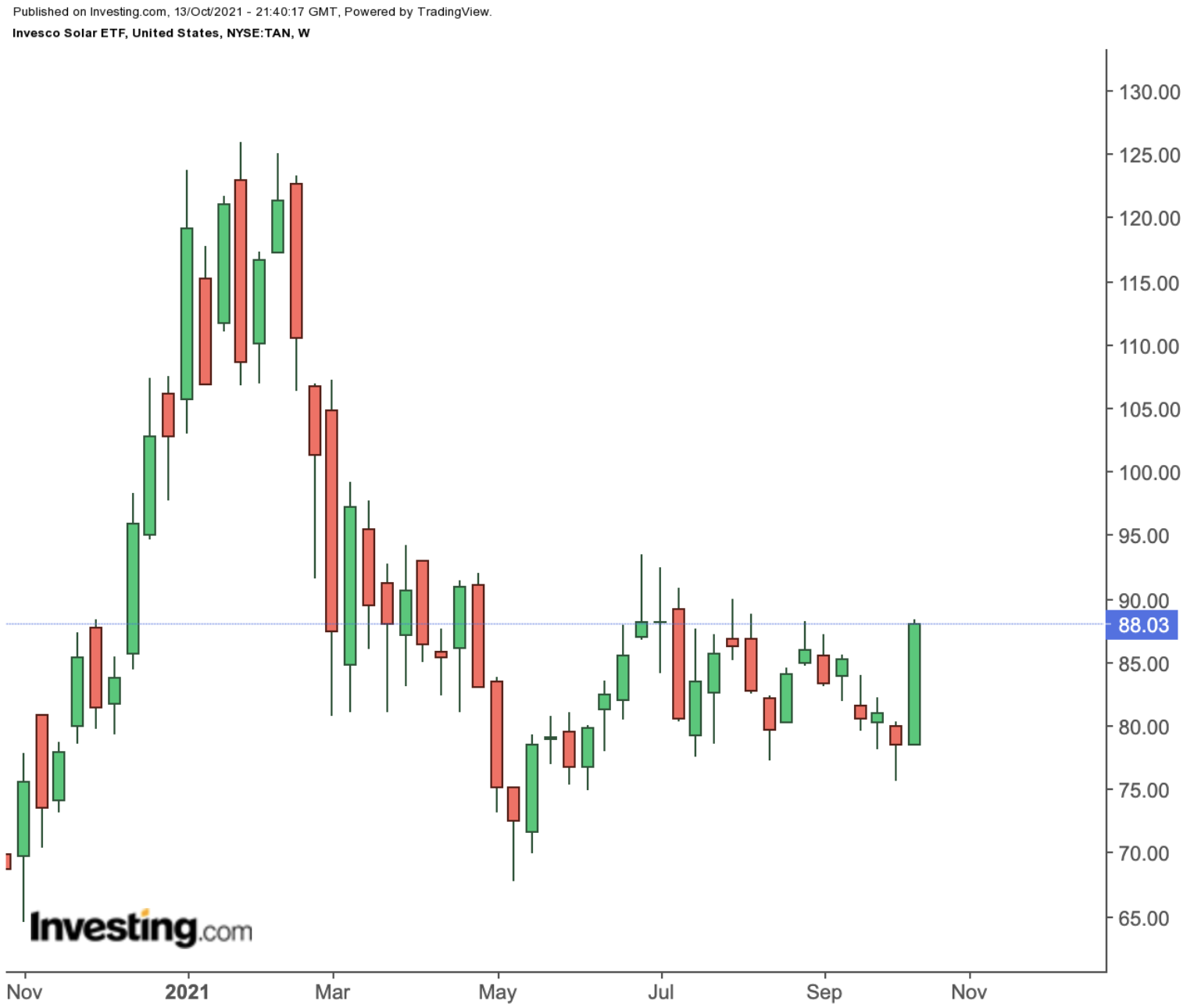Scotland is getting ready to host the 26th United Nations Climate Change Conference of the Parties, known as the COP26 Summit, in Glasgow between Oct. 31 and Nov. 12. The UK and Italy are partnering in welcoming around 30,000 delegates from close to 200 countries.
The conference “will bring parties together to accelerate action towards the goals of the Paris Agreement and the UN Framework Convention on Climate Change.”
Discussions at the summit will center on closing the gap further between science and global policy when it comes to climate change. Among the topics to be discussed thoroughly are net-zero carbon emissions targets, decarbonization, and increased financial pledges, especially from richer nations, and renewable energy transformation.
The alternative power space includes energy derived mostly from bio-fuels (like ethanol or biodiesel), solar, wind, hydro, and geothermal sources. According to International Renewable Energy Agency's report Global energy transformation: A roadmap to 2050:
“Renewable sources, including solar and wind, could meet 86% of power demand. The energy transformation would boost gross domestic product by 2.5% and total employment by 0.2% globally in 2050. It would also bring broader social and environmental benefits.”
For companies, legislative developments understandably bring operational changes as well as growth opportunities, and could impact financial performance. Research by Goldman Sachs suggests: “the clean energy infrastructure sector offers the potential for secular growth and income generation, providing a compelling long-term investment opportunity.”
Investors who pay attention to developments in the clean energy space could consider buying an exchange-traded fund (ETF) that focuses on businesses likely to be in the forefront of sustainable energy transformation and related technologies.
1. Invesco Solar ETF
Current Price: $88.03
52-Week Range: $64.48 - $125.98
Expense Ratio: 0.69% per year
The Invesco Solar ETF (NYSE:TAN) invests in global firms in the solar energy industry. The fund started trading in April 2008.

TAN, which has 54 holdings, tracks the MAC Global Solar Energy Index. The top 10 names make up about 57% of net assets of $3.04 billion. In other words, it is a top-heavy fund.
More than half of the names come from the US. Next in line are businesses from China (18.66%), Spain (6.20%), Taiwan (3.62%), Germany (3.48%), Israel (3.36%) and others. In terms of sectors, we see information technology (56.20%) followed by utilities (21.90%) and industrials (16.31%).
SolarEdge Technologies (NASDAQ:SEDG), which offers inverter solutions for solar photovoltaic systems, energy technology group Enphase Energy (NASDAQ:ENPH), which supplies micro-inverters, First Solar (NASDAQ:FSLR), which manufactures photovoltaic solar modules, China-based Xinyi Solar Holdings (HK:0968), which manufactures solar glass; and home solar, and battery storage company Sunrun (NASDAQ:RUN) are among the leading names in the roster.
The fund returned 18% in the past 12 months and hit a multi-year high of $125.98 in January 2021. But since then, the ETF has lost more than 30% of its value.
Put another way, 2020 was a stellar year for TAN as well as most other clean energy ETFs. But this year, it is a different story. The COP26 summit could become the catalyst to put many stocks in this space back on investors’ radar.
Forward P/E and P/B ratios of TAN stand at 33.53x and 3.27x.
2. VanEck Vectors Low Carbon Energy ETF
Current Price: $156.26
52-Week Range: $112.90 - 195.55
Expense Ratio: 0.62% per year
The VanEck Vectors Low Carbon Energy ETF (NYSE:SMOG) gives access to global businesses in the renewable energy space. In addition to relying on alternative energy sources, these companies might focus on battery production, smart grid technologies, energy storage, electric vehicles, and waste-to-energy production. The fund was first listed in May 2007.

SMOG, which has 30 holdings, follows the MVIS Global Low Carbon Energy Index. In terms of countries, about a third of the stocks come from the U.S., followed by those from China (18.65%), Denmark (10.73%), Spain (7.21%), and Italy (6.53%).
The top three sectors include utilities (36.2%), consumer discretionary (27.3%), and industrials (20.2%). The fund's net assets stand at $285.3 million with the 10 largest holdings constituting more than 55% of that figure.
Electric vehicle heavyweights Tesla (NASDAQ:TSLA), Nio (NYSE:NIO), and Xpeng (NYSE:XPEV), Spain-headquartered utility Iberdrola (MC:IBE) (OTC:IBDRY), and Danish Vestas Wind Systems (OTC:VWSYF), which focuses on the wind power industry, lead the names in the ETF.
So far in 2021, SMOG is down almost 7% but has returned 27% over the past year. It saw a record high of $195.55 in January. But since then the ETF has lost more than 20%.
Trailing P/E ratio is 31.69x and P/B ratio is 3.66x. Interested readers could consider buying the dip in price.
